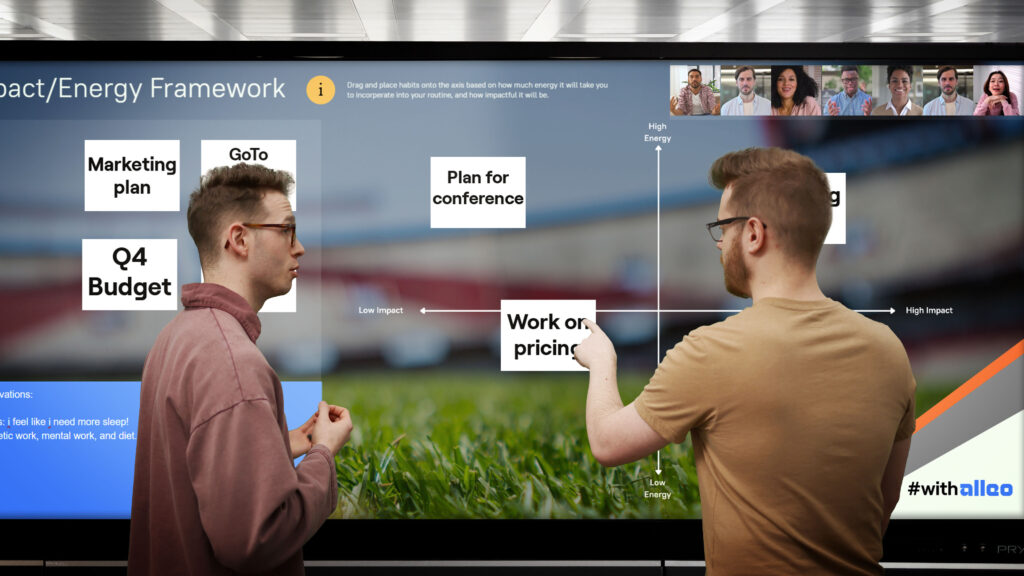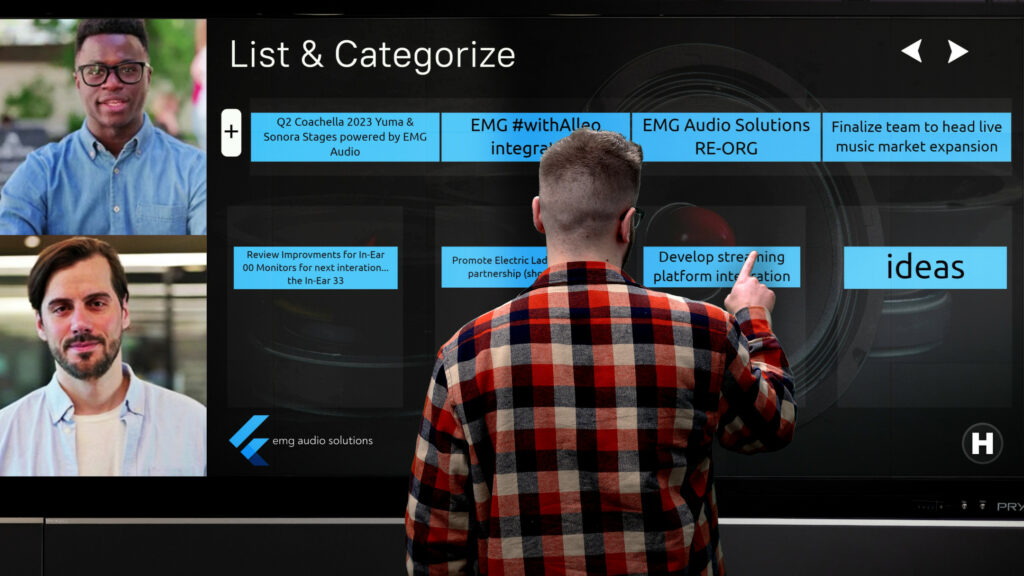The Evolution and Intersections of Facilitation
The world has become increasingly connected through technological advances in the 2000s, revolutionizing how we learn and communicate.

Accurate reflection of real-time data, version history, communication, and more.
The most recent is always clearly visible.
Alleo enables all users to express ideas and feedback non-verbally and verbally.


Bring together all types of content in one place vs. switching between applications or browser tabs.
The world has become increasingly connected through technological advances in the 2000s, revolutionizing how we learn and communicate.
Let’s face it, a standard presentation won’t leave a lasting impression. Discover how to engage your customers with visual collaboration software here.
In a world filled with in-person and remote workers, company events need to appease both groups. The solution? Hybrid meetings.
We are already working with the leading AV and UC brands in the world and Alleo offers a way to flexibly expand, update and upgrade customer setups to meets specific needs beyond the standard tools into Deep Collaboration.”
Bastian Braun Head of Strategic Sales